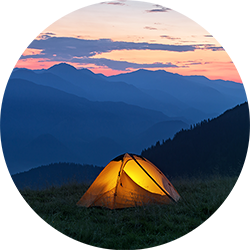Sechu Tuan Nalla Wildlife Sanctuary
This sanctuary is rich in high-altitude Himalayan wildlife population. Sechu Tuan Nalla Wildlife Sanctuary is located at an altitude ranging from 2550 to 6072 m. Its habitat mainly consists of Himalayan moist temperate and alpine moist scrub. Some of the high altitude endangered species of both flora and fauna are found in the sanctuary.
The high-altitude sanctuaries have their own charm, and they have a unique topography, and same is the case with this picturesque sanctuary. Ambling through the serene high-altitude terrain, a visitor can explore and discover Indian Wildlife, and get close to the nature.
Flora: Forest types include lower western Himalayan temperate forest, moist alpine scrub macrocephala, and Ephedra gerardiana.
Fauna: Ibex, Himalayan thar, snow leopard, musk deer, blue sheep, markhor (brown bear), Himalayan black bear, Himalayan mouse-hair.
Avian-Fauna: Pheasants, Prunella collaris
Major Attractions
High Altitude Wildlife: Being one of the high-altitude sanctuaries of Himachal Pradesh, Sechu Tuan Nalla Wildlife Sanctuary is located far away from the cacophony of the city life. The undulating untouched sanctuary is home to some of the endangered species found especially in the Himalayan region, including Blue sheep, Himalayan Tahr, and more. You can spot the birds typical to the Himalayan Treks here.
Exact Location: Sechu Tuan Nalla Wildlife Sanctuary is located in the Chamba district of Himachal Pradesh.
Area: 102.95 sq. km
Route: From Delhi you need to board a train or a bus to reach Pathankot, and from there take a bus to Chamba, and then on to Sach Pass (4413 m) via Sathraundi. You can go to Kilar from Sach Pass and then by foot to Sechu. Pathankot has the nearest railhead.
Alternatie Route: you can start from Kishtwar (J & K) to Sarsu which is 36 km away, and then to Sechu via Tholi, Ishtiari, Killar, Saj. You need to trek from Sarsu onwards. There is another approach from Keylang to Nigari, and then on foot to Sach Khas which is located adjacent to Sechu Tuan Nalla Wildlife Sanctuary.
Best Time to Visit: June to September
Things to keep in mind
- Prior permission not required to enter the sanctuary
- There are Hindu and Buddhist temples that are are located at Bhat, Tuan, Hilu, Chrroti, and Kalichor
- Carry binoculars
Other Attractions in the Vicinity
Dalhousie: It is a picturesque hill station built during the British period, and is located an altitude of 2039 m above sea level. The place is bounded by alpine vegetation and offers exhilarating natural scenery to explore. Some other major attractions in Dalhousie are Jandhri Ghat, Satdhara Springs that has great therapeutic value as it contains mica with medicinal properties, Subhash Baoli, St Francis Church, and more.
Tundah Wild Life Sanctuary: Tundah Wildlife Sanctuary is located around 59 km from Chamba, and is connected with Kugti Sanctuary in the east. It plays host to a number of rare and endangered species of wildlife, including Himalayan tahr, Ibex, and pheasants. Also, it houses musk deer.
Kugti Sanctuary: Kugti Sanctuary is situated at an altitude ranging from 2,195 m to 5,040 m. It is located at a distance of about 30 km from Bharmaur and 15 km from Kugti village. The undulating habitat plays host to snow leopard, ibex, brown langur, common cat, leopard, deer, musk marten, Himalayan yellow throated fox, Indian/red Serow, ghoral, Himalayan thar, monal and snow cock. One can also find number of medicinal plants here.


